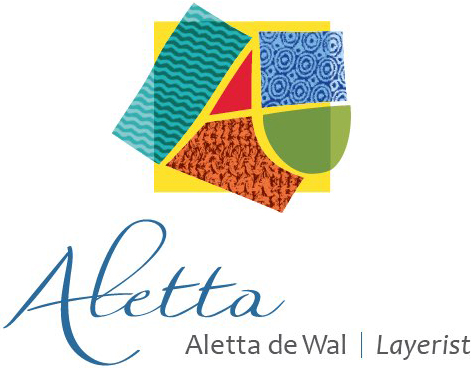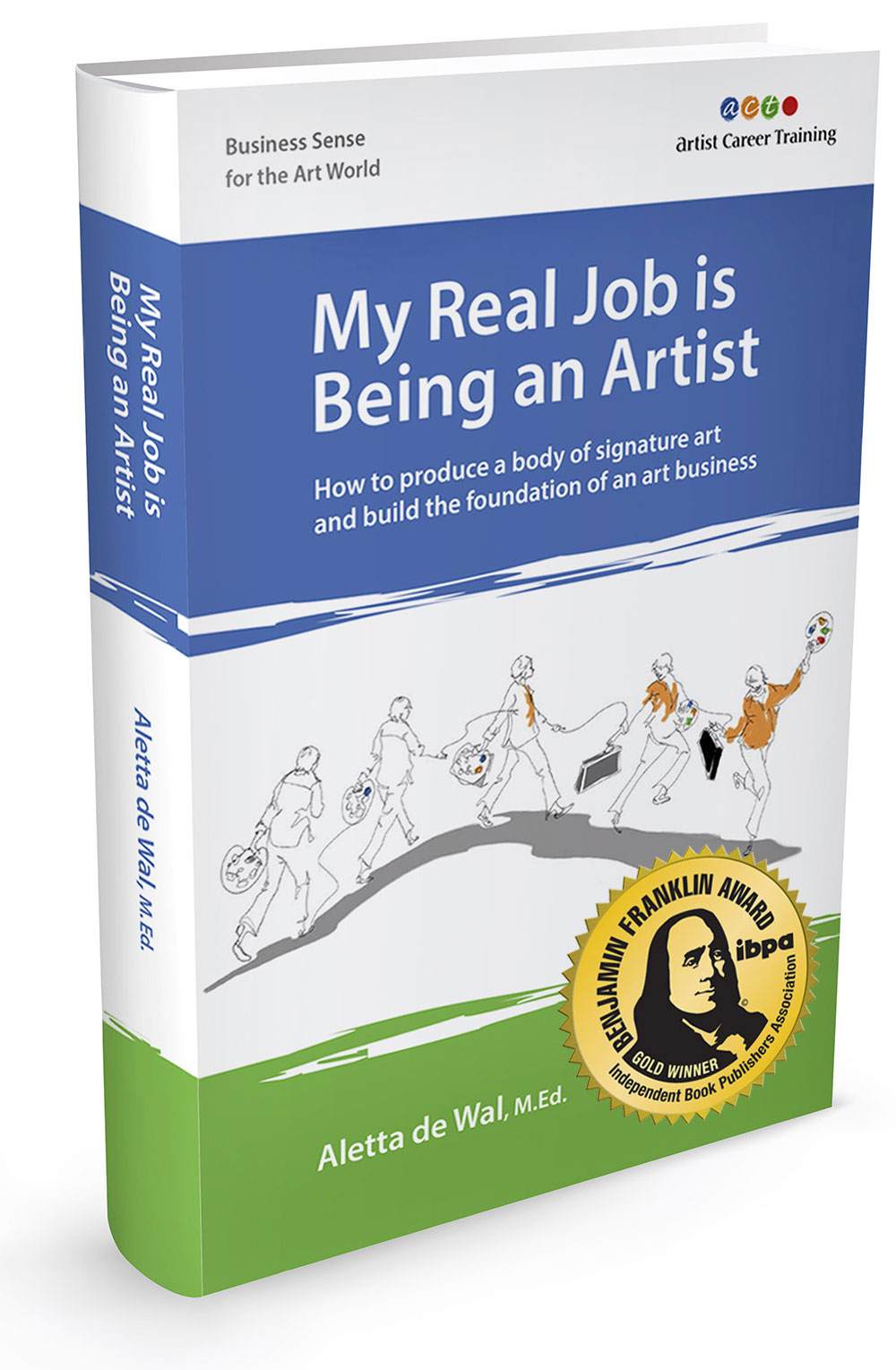Textile Artist Michelle Sirois-Silver. A Stitch in Time Creates Art.
Evolution of an Art Form
Estimated reading time: 6 minutes
Tired of reading? You can listen to the Tip-of- the-Week! ![]()
“Working with my hands is bred in the bone. Using textiles in my art making and their tactile qualities has a grounding effect for me. They bring me back to that place of possibility.
"The first time I watched someone pull loops up through a backing I was captivated. The serenity of that moment stays with me and my passion for hand hooked rugs continues to grow and flourish.
"I often think back to the mid 1800's to the men and women for whom making a hooked rug was a matter of thrift. For many it would be their only opportunity for creative expression and I believe they would laugh to hear me call their rugs ‘art’ or ’sustainable.’ They were making rugs to warm their beds and keep out cold winter drafts. They didn’t hook rugs to last a hundred years and yet they left us a legacy rich in history and storytelling.”
Michelle Sirois-Silver is a Vancouver based fibre artist who designs and hand hooks rugs for the floor and wall. She was born on the Gaspe and grew up on Vancouver Island so it's not surprising that natural elements are recurring themes in her work.
The rug hooking technique she uses is a traditional folk art popular in eastern Canada. Her contemporary style of hand hooked rugs embraces its spirit and traditions but the subject matter, designs, and sense of colour make her work uniquely west coast.
The works incorporate a range of materials from hand dyed wool fabrics to metal and silk ribbon hand hooked into a linen backing. Her most recent works explore ways that combine surface design techniques with a hand hooked surface.
Michelle teaches workshops, writes, and exhibits her work internationally. She was awarded a development grant from the Surface Design Association for "Recovery Method Series."
She is a member of The International Guild of Handhooking Rugmakers, Craft Council of British Columbia, CARFAC, and The Surface Design Association.

Textile Artist Michelle Sirois-Silver http://www.michellesirois-silver.com https://www.facebook.com/pages/Michelle-Sirois-Silver-Studio-textile-art-hand-hooked-surface/123694767709374?ref=hl
ACT: What prompted you to start your professional art career?
Blame it on love.
As you said in the introduction to this interview, the first time I saw someone making a hand hooked rug I felt a deep connection with the process. Maybe it was the way that the flat fabric strips transformed into 3 dimensional shapes when they were hooked into the backing. Or the serenity of the moment. Whatever it was, I’ve been making hand hooked rugs for almost twenty years now.

© Michelle Sirois-Silver. Close-up of hand hooks, waste hosiery hand hooked into a linen backing.
Developing my craft, relationships, support, and encouragement were key factors that moved me to my professional art career.
- At my very first rug hooking workshop in Calgary, Alberta with Barb Kennedy, I learned two very important things: do what you love (because the process is long and intensive) and how to break down and hand hook a large design. Ten years would pass before I transitioned from passionate amateur to emerging artist.
- During those years I worked at my craft. I learned about colour and composition, how to dye wool fabric, and I designed and hand hooking many rugs.
- I began teaching and working with others to build a local rug hooking community. I taught my first class from my dining room table to five students including my mother, friends, and neighbours.
- And as my work evolved I began participating in group exhibitions and events outside of the rug hooking community. I was exposed to contemporary hand hooking and the international art scene.
- One of the highlights during those early years was the opportunity to teach a workshop and give a presentation at the Handweavers Guild of America Conference in Vancouver (2002).
Three pivotal points moved me from passionate amateur to emerging artist and each one was connected to the other.
- I had registered for an art therapy workshop (2004) at our local community centre. The workshop helped me to access my creativity on a deeper level and inspired me to work with abstract imagery that implied, rather than stated, the subject matter.
- In 2005 I became a member of the Surface Design Association. At first, I worried that my work might be considered too rooted in folk art tradition but I went ahead nonetheless because although the technique was traditional, the subject matter was contemporary.
- I went on to take advantage of an opportunity when I submitted a piece inspired by the work I had done in the art therapy workshop to the Surface Design Association Conference’s member show. That was a breakthrough for me as an emerging artist – to have my work exhibited with all levels of artists to see what that world looked like. My piece was one of three selected for the cover art on the Smith Kramer Traveling Exhibition catalog promoting the SDA juried Sum of the Parts Traveling Exhibition. This particular piece would become the inspiration for my Earth Water exhibition proposal to the FibreEssence Gallery. In 2006, I had my first solo exhibitions at the Windsong Gallery in Sechelt and at the FibreEssence Gallery in Vancouver. The feedback was encouraging and several pieces were purchased.
Preparing for the two solo exhibitions was a rite of passage. They created the opportunity to develop a strong work ethic because I went on to make twenty hand hooked pieces over an eighteen-month period, which is no small feat. Knowing that I was able to generate that amount of work also gave me the confidence to move forward.
I’m forever grateful to the people I have met over the past two decades. Their support and encouragement were an important part of my transition from passionate amateur to mid-career artist and a professional art career.
ACT: What is your signature style and artistic direction?

© Michelle Sirois-Silver. Close-up of hand hook, scissors, waste hosiery hand hooked into a linen backing.
My signature style is always evolving these core elements into bodies of work:
- Colour and texture.
- Abstract images that imply the subject, especially my love of nature.
- Relationships between shapes, line, and colour.
Over my twenty years of working with the hand hooked surface I have produced several series using this technique. There’s always a recognisable ‘thread’ through the work that continues to shift with materials and techniques.
Three years ago, my friend and weaver, Kate Barber showed me how to make deconstructed screen prints. From there I began integrating machine and hand stitch onto the printed surface.
Today, I continue to make hand hooked rugs, but my process now includes making small mixed media collage pieces that I reference for inspiration and small textile works where I explore ideas for my larger mixed media pieces.
ACT: What is your “life’s work” as an artist?
My life’s work has been about the journey with the work as the vehicle.
My art making created the opportunity to explore my ideas, share my expertise with others, and engage with and support my community.
ACT: What is your art business direction?
My business direction has developed over time through trial and error.
There are some things that I thought I should be doing - tried and failed miserably – participating in craft fairs was one of them. I made things that I thought would sell but my heart wasn’t in it, and I can’t fake enthusiasm.
Early on I also felt compelled to generate income by creating patterns and selling hand dyed wool fabrics to rug hookers but I didn’t have the commitment or passion to pursue these avenues.
My strengths lay elsewhere and were better suited to supporting a full-time studio practice.
Since 1998 I’ve also been teaching introductory and advance level rug hooking workshops - something that I’m good at and enjoy. My students tell me they appreciate my enthusiasm and generosity for sharing knowledge.
I create hand hooked and mixed media works, exhibit locally and internationally, lecture, write for magazines, and participate in open studio events like the Eastside Culture Crawl and First Saturdays Open Studios here in Vancouver.

© Michelle Sirois-Silver. Earth Water 3 & 6. Hand dyed, hand hooked. Wool, silk, synthetics, cotton, metal, linen. 51” x51”
My business goals are really modest:
- Respect the work.
- Be an expert in my field.
- Be professional.
- And treat studio and gallery visitors and clients the way I would like to be treated.
ACT: How do you manage your time, money and energy?
I’m balancing my home life with my studio practice. It has been hard for me to ‘manage my time,’ and I often feel like I’m running from one deadline to the next.
Time, money and energy are my most valuable resources (something I have come to understand and appreciate through Artist career Training webinars and conversations with you, Aletta).
My income is generated from workshop fees and artwork sales.
My work patterns are based on recurring annual events and I try to pace myself accordingly.
- I exhibit three to four times a year in group exhibitions with a solo show every other year.
- The fall is my busiest time with the East Side Culture Crawl, a four-day open studio event, along with the workshops I teach at the Maiwa Textile Symposium.
- The winter and spring months are typically filled with designing and creating new work for exhibitions, teaching workshops from my studio, and the First Saturdays Open Studio (February-June).
- Summer is typically time for my solo shows.
- Ongoing activities include updating my website, social media, marketing and promotion, exhibition submissions, and volunteer work. I am the editor of the Surface Design BC + Yukon region newsletter and I sit on the steering committee.
- The workshops are straightforward and after teaching for eighteen years I have a comfortable rhythm.
- And I try to attend as many art openings as possible.

"Michelle Sirois-Silver, Instructor, Advance Rug Hooking Workshop for Maiwa Textile Symposium 2014. Students display work made in the workshop.”
My biggest challenge is making the hand hooked pieces – these works are time consuming and I feel that I have to have my hand in every part of the process.
I did try a different approach… my most recent hand hooked works, The Recovery Method Series, were made using manufacturing waste from local designer, Katherine Soucie.
For the first time I was working with materials that had been hand dyed by someone other than myself. Initially I worried about letting go of what I consider to be an important aspect of my creative process, but instead I loved working with these materials because not having to dye them meant I could focus on other aspects instead. I could still see the ‘thread’ of continuity.

© Michelle Sirois-Silver. Michelle Sirois-Silver surrounded by piles of waste hosiery used to make “Extraction 8, 9, 10.”
ACT: What obstacles have you encountered in your art business and how have you handled them?
My biggest obstacle is trying to create a volume of hand hooked artwork for sale.
Aletta, you’ve commented on the importance of creating 100 new small to medium sized works a year. It takes me two years to create a body of work – 20 to 30 pieces - for a solo exhibitions, which is challenging because I am always evolving my art but I constantly reference the original concept and early pieces in the series.
There is also the added pressure to sell the work because I know that it will be another two years before the next body of work is completed.

© Michelle Sirois-Silver. Hosta Series: Hosta 1, 2, 3. Hand dyed, hand hooked. Wool, linen. 72” x 26.”
This is my tenth year of producing hand hooked work for exhibition and I am feeling a bit burnt out by the process, so I decided to make some changes. I want more freedom to explore and time to ‘fail.’
I’m taking a page from mixed media artists, Nancy Edell and Liz Alpert Fay. Each has successfully produced and exhibited both hand hooked and mixed media works. Most, if not all, of the work in my solo shows is hand hooked. I plan to shift my studio practice and make 80% of my works mixed media and 20% hand hooked.
As much as I love making the hand hooked works, which I believe has turned into a sentimental attachment, I need to be realistic and honest with myself as an artist. The feeling I get when making mixed media work inspires and energizes me daily and I’m drawn to this. I love doing it and I’m able to create a larger volume of work that I feel good about and would not hesitate to exhibit and sell.
A minor obstacle has been engaging with the public, because many people on the west coast are not familiar with the rug hooking technique. Some have a bias about folk art and hand hooked rugs and question its legitimacy as an art form. So in addition to talking about the artwork I’m also educating the studio or gallery visitor about the technique and its origins at the same time.
One other increasing challenge is sourcing a good supply of wool fabric for my hand hooked rugs. When I started, I’d find wool skirts and tweed blazers at second-hand stores, as well as bolt ends from manufacturers. Thrift stores don’t have the same quality of clothing and what they have is more expensive. In Canada almost all of the woollen mills have closed and even manufacturers’ bolt ends are hard to come by due to offshore manufacturing. Fortunately, I can purchase good wool fabric from mills in the United States by mail order.

© Michelle Sirois-Silver. Love Decay Repair Series : Imagined Dialogue 1, 2, 3. Hand dyed, hand hooked. Wool, linen. 50” x 34”
ACT: What peak moments have you had as an artist?
- My first solo show at the FibreEssence Gallery in Vancouver.
- My first magazine cover for the Surface Design Association travelling exhibition.
- My first sale of a large piece at the Windsong Gallery in Sechelt, British Columbia.
- Being invited to be the opening keynote speaker at the International Guild of Handhooking Rugmakers conference in 2015.
- Meeting people (locally and internationally) through art that I would otherwise never have had the opportunity to meet.
ACT: Who are your role models and mentors? What was the best advice they gave you?
- Artist Wayne Theibaud, whose use of colour, shape and value inspire me.
- Textile artist Dorothy Caldwell, whose work sets the bar for intent, use of line and concepts around place that are simple and pure but also complex.
- Sculptor and writer, Anne Truitt, who wrote about being an artist, making and teaching art, raising her children and aging. Her three autobiographical books titled, ‘Daybook: The Journal of an Artist,' ‘Turn’ and ‘Prospect’ inspired me on so many levels. There was something pure about her reflections on her life and art and I am drawn to that.
- And, I’m surrounded by an active, vibrant arts community that motivates and inspires me to make art on a day-to-day basis, to get out and try new things, attend gallery openings and using social media to promote our work.
ACT: How do you define success and how do you celebrate it?
Two things define my success.
- The first is creating work that I believe in, then exhibiting and selling it.
- The other is creating the best possible experience for the studio or gallery visitor, the collector, and the student. I want to honour and respect that people take time from their busy lives to come see my work or take a workshop.
Sometimes the satisfaction of something well done or an excellent conversation is all I need to celebrate.
And depending on what’s going on in my life at the time, I will treat myself to a workshop with a favourite instructor, or purchase a piece of artwork.
 © Michelle Sirois-Silver. Extraction 8, 9, 10. Hand dye, hand hooked. Waste hosiery, linen. 60” x 36.”
© Michelle Sirois-Silver. Extraction 8, 9, 10. Hand dye, hand hooked. Waste hosiery, linen. 60” x 36.”
ACT: What is your art marketing strategy? What promotional materials and actions do you use most often?ACT: What is your art marketing strategy? What promotional materials and actions do you use most often?
My overall marketing strategy timeline is event driven.
I rely heavily on the relationships and friendships I have created with people and art based organizations over the years, as they are my biggest supporters.
I try to stay connected with the local art scene going to gallery openings, lectures, supporting fellow artists, and volunteering.
The types of actions and promotional materials I use include:
- Word of mouth
- Social media (Facebook and Instagram) to promote my process and gallery exhibits
- Website
- Listings in online newsletters and calendars
- Writing magazine articles about my work
- Designing and distributing postcards and business cards
- Hand written invitations to openings
ACT: What opportunities has a professional approach to your career brought you that you might otherwise not have had?
Because of the way I approach my art career, unexpected things start to happen - invitations to exhibit or present at a conference; my artwork being used on magazine covers; people turning to me as an expert in my field.
That’s why it’s so important to be professional. You never know whom you are meeting or talking to and where that encounter might lead. I make a point of really listening, hearing what the other person has to say and to be really authentic when I talk about my work.
ACT: What changes have you experienced in the art market and how have you navigated them? What lessons have you learned?
Like many artists, after 2008, I experienced a decline in sales of my large works and it has taken several years of consistent marketing and soul searching to recover.
The decline forced me to be more open to ideas and possibilities (something I learned from working with you, Aletta) but also to remain focussed and be more selective.
I have had many conversations with artists about creating a range of works with various price points. Initially I resisted doing this because I believed I wouldn’t be taken seriously as an artist if I made smaller inexpensive works.
A couple of years ago I asked a successful investment broker how he identified his target market and maintained his success. His response made me rethink my attitude about lower price works.
Many people would like to become collectors, but they have a restricted budget to work with. Collectors have a starting point and over time, as their income increases, so does their buying power.
Around the same time I took two workshops with visual artist, Jason Pollen. Jason talked about approaching your work with intent, even if it’s only a workshop sample, and this really resonated with me.
These two conversations changed the way I think about and approach small works. They have become an integrated part of my art practice. In small works, I experiment with materials and techniques, and try out designs and concepts.
Each small work is created and completed with the same attention to detail that I give my larger works. I price the smaller works to sell and I have had success with this approach especially during the open studio events.
My web site, e-mail and social media are an integral part of my ongoing marketing strategy. I use each form of social media differently:
- A potential collector will revisit the website over and over again to the point that when this person walks through the door to my studio, they have already made their decision.
- I promote and fill my studio-based workshops using Facebook.
- Instagram exposes my work to a younger demographic and keeps me connected to what other artists are doing during open studio events.
- And I use email for relationships that have been built over time.
But, I have also rediscovered the beauty of sending a hand written invitation along with a handmade card for an exhibition opening. It surprised me to hear that people were excited and appreciative when they received them.
ACT: How do you feel artists can benefit from the types of programs, services and products I offer at Artist Career Training?
You helped me prepare for a panel discussion using your one-on-one consultation service. You were instrumental in helping me to identify a ‘thread,’ which made my presentation far more coherent and relevant. At the end of my presentation, the audience actually clapped!
You often talk and write about our only resources being time, money and energy and I often reference this during my own decision making process.
You helped me to crystalize my dialogue about my art practice through extensive questionnaires and online webinars. Artist Career Training has helped me to clarify my art practice, identify realistic goal setting and take the actions that make it happen.

P.S. I understand the challenges of many kinds that we face as artists and members of the human race. Let me know how I can help you get your art and life going in the direction you want to go at your pace. The first 15 minutes is on me.











